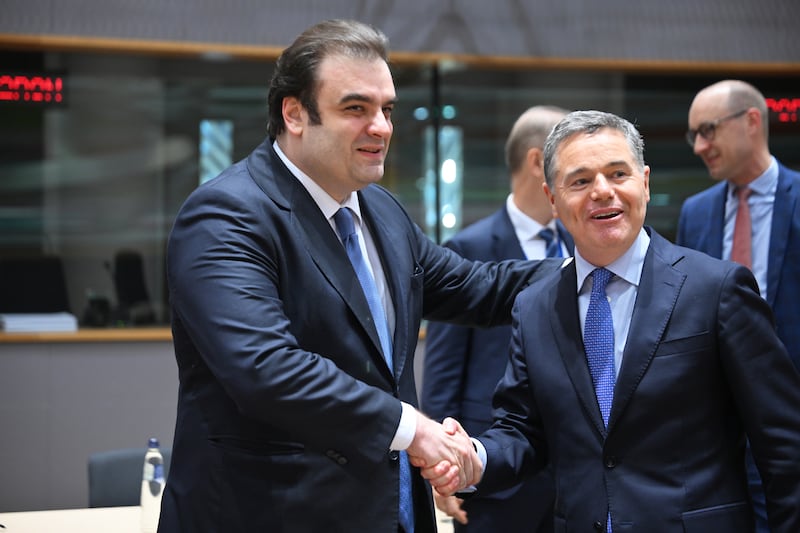The global arms trade has reached its highest volume since the end of the Cold War, partly due to purchases by Middle Eastern governments from the United States and the United Kingdom.
The Stockholm International Peace Research Institute reports that more major weapons were transferred between 2012 and 2016 than during any period since 1989-1990, when exports had declined from their peak in the 1970s and 1980s.
The report says the US was the largest global exporter, accounting for 33 per cent of arms shipments, and Russia was the second largest with 23 per cent. China exported 6.2 per cent of the total, France 6 per cent, Germany 5.6 per cent and Britain 4.6 per cent.
Chinese sales surge
Those six countries accounted for 78.4 per cent of total arms exports. While the US increased the volume of exports by 20 per cent and Britain by about 28 per cent, China, formerly a small exporter, boosted sales by a huge 75 per cent. Exports by Germany and France declined.
Asia and Oceania accounted for 43 per cent of global arms imports in 2012-2016, with India, the world's largest importer, acquiring 13 per cent of the total. Imports by the Middle East rose dramatically, however, from 17 per cent of the total in 2007-2011 to 29 per cent in 2012-2016.
Saudi Arabia, the second-largest arms importer for that period, accounted for 8.2 per cent of total global imports, increasing purchases by 212 per cent compared with 2007-2011. The United Arab Emirates imported 4.6 per cent of the total, Turkey 3.3 per cent and Iraq bought 3.2 per cent of the world's weaponry output. Arms purchases by Qatar went up by 245 per cent.
Saudi Arabia’s expenditure on arms in 2015, $87.2 billion (€82 billion), was third largest after the US, which spent $596 billion and China which spent an estimated $215 billion. The UAE spent $22.8 billion.
Oil price slump
Commentators note that the slump in the price of oil, the main source of revenue for the Arab Gulf states, has made no impact on purchases. Governments argue they need the arms to deter Iranian subversion or outright attack.
Arms sold to Saudi Arabia and the UAE have been used in the war waged on Yemeni Houthi rebels accused by the Saudis and Emiratis of being Iranian proxies.
However, a study, Iran's Small Hand in Yemen by Mareike Transfeld, published by the Carnegie Endowment, argues that the Houthis have had only "marginal" Iranian support, "mostly political with minimal financial and military assistance". The Houthis are, Transfeld argues, not a "priority on Iran's foreign policy agenda".
Nevertheless, the Saudis and Emiratis have prosecuted the war for nearly two years, despite an international outcry over the devastation to the country’s hospitals, schools, and infrastructure, and an estimated 11,400 civilian fatalities, a figure given by a Yemeni monitoring group. US and UK experts have been deployed with the Saudis to improve targeting with smart weapons although the Saudis have repeatedly struck civilians and civilian facilities.
Cluster munitions
During its eight years in office the Obama administration offered $115 billion in weapons to Riyadh but last year blocked the sale of cluster munitions and the delivery of $300 million worth of precision-guided missiles. The weapons are expected to be released by the Trump administration which has pledged close co-operation with Saudi Arabia.
US delivery of withheld arms to Saudi Arabia will provide relief to Britain, where the government has come under pressure from parliament and human rights groups to halt military sales to Riyadh and withdraw UK military personnel from the Saudi command centre. The UK has approved the sale to Saudi Arabia of £3.3 billion (€4.7 billion) in arms since the war on Yemen began in March 2015 and expects to sell its newest fighter jets to the Saudis.
Since 2012, eastern European states have entered the Middle East arms market by selling €1.2 billion worth of assault rifles, mortar shells, rocket launchers, heavy machine guns, anti-tank weapons and ammunition to Saudi Arabia, the Gulf emirates and countries adjacent to Syria. These arms have been sent to insurgents in Syria, prolonging and fuelling the nearly six-year long war there.


















